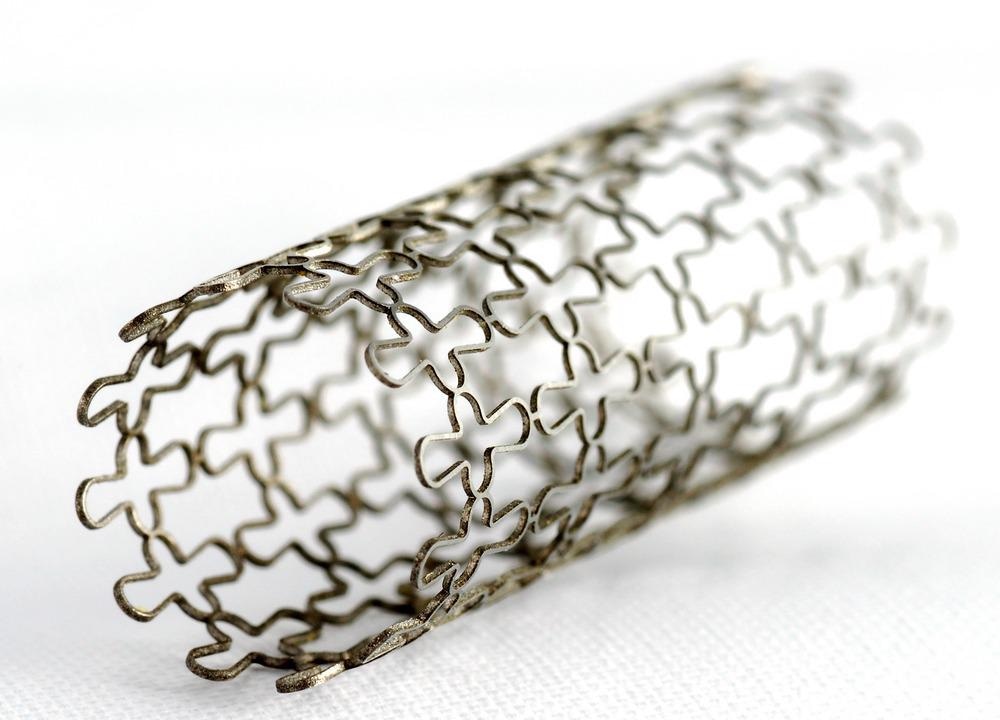 By Surbhi JainReviewed by Susha Cheriyedath, M.Sc.May 6 2022
By Surbhi JainReviewed by Susha Cheriyedath, M.Sc.May 6 2022In a review recently published in the open-access journal Materials, researchers discussed the biocompatibility of magnesium alloys with different surface coatings.

Study: Review of the Effect of Surface Coating Modification on Magnesium Alloy Biocompatibility. Image Credit: Floris Slooff/Shutterstock.com
Background
Medical metal materials are crucial in the repair and replacement of bone abnormalities caused by illnesses and injuries to the joints. Magnesium is a macroelement that is required by the human body, hence its breakdown in the body is typically regarded as non-toxic. Magnesium alloy materials have unique degradability, good human metabolic compatibility, and trustworthy mechanical qualities when compared to ceramics, polymers, and other medical implantable metals.
However, because medical magnesium alloys are too chemically active and the rate of corrosion in the human body is too quick, the material's supporting strength drops sharply with time, and its biocompatibility is poor, limiting its application effect. According to current research, surface coating modification of magnesium alloys can increase not only corrosion resistance but also mechanical characteristics and biocompatibility. The surface structure has been recognized as one of the important factors affecting the combination of implants and bones in recent years, and its morphology can regulate the growth orientation of cells.
About the Study
In this study, the authors summarized the application and characteristics of six different surface coating modifications in the biomedical magnesium alloy field, which included micro-arc oxidation (MAO), chemical conversion, electrophoretic deposition, sol-gel, hydrothermal method, and thermal spraying methods from the perspective of corrosion resistance and biocompatibility of biomedical magnesium alloy materials.
The researchers also discussed the future of surface coating modification, which emphasized that preparing modified coatings on the implant surface, in combination with various modification post-treatment technologies, was the main direction for improving biocompatibility and achieving clinical functionalization. The number of publications was examined in the Web of Science database to understand the development of the six approaches.
The team examined the features of various magnesium alloy surface coating modification technologies and their impact on corrosion resistance and biocompatibility, as well as the future development trend of surface coating modification of biomedical magnesium alloys. A summary of the advantages and disadvantages, definitions, characteristics, and a number of literature articles of the six approaches were provided to make it easier to compare their differences.
Observations
Several studies reported that the major component of magnesium fluoride coating was tetragonal magnesium difluoride, with a crystallite size of several nanometers. The corrosion current density was lowered by 40 times with a decent electrode impedance of 0.18 kΩcm2. Surface hardness was enhanced via MAO, with microhardness ranging from 1000 to 2000 HV. Furthermore, after oxidation at 350–360 V for 15–20 min, the corrosion current of MAO coating on titanium alloy surface was lower than that of magnesium alloy, and the corrosion voltage was higher than that of magnesium alloy, which indicated that titanium alloy coating was more corrosion resistant. The biocompatibility was optimum when the hydroxyapatite (HA) content was 0.4 g/L.
Because its own substance was turned into the coating, the chemical conversion process had a strong binding force. To get a superior coating, the micro-arc oxidation approach was combined with the sol-gel method, which was commonly employed as a sealing layer. The geometry of the magnesium alloy had no bearing on electrophoretic deposition, which could quickly generate a homogeneous and smooth coating. The coating had strong sintering activity because the hydrothermal process required no high-temperature calcination, and thermal spraying increased corrosion resistance and metallographic structure by melting diverse materials.
Magnesium alloys had good corrosion resistance, excellent mechanical qualities, and biocompatibility because it was implanted inside the body as a bone plate. The chemical conversion process was covered in 992 papers, with roughly 120 published in 2019. Micro-arc oxidation method had the most publications published in 2019. The sol-gel method had the most publications published in 2018, and the electrophoretic deposition method had the most articles published in 2019. With roughly 65 papers, the hydrothermal method was published the most in 2021. The thermal spraying method had the most publications published in 2019.
Most medical coated magnesium alloy research was currently conducted in vitro, with only a few alloys implanted in animals. Distinct implantation sites required different functions from medical coated magnesium alloy. Medical coated magnesium alloy was primarily employed as bone screws; however, a single coating could not provide stable deterioration prevention and could not successfully connect shattered bones.
Conclusions
In conclusion, this study elucidated that the cost of using magnesium alloys as a coating for medical use will be reduced due to green manufacturing, and it will be extensively used in clinical settings. Various approaches can be utilized simultaneously to generate perfect coatings with suitable surface roughness, hydrophilicity, pore size, and hydrophobicity to improve the pertinence of magnesium alloy coatings.
Medical coated magnesium alloy is commonly employed for flexible coating due to the future development trend of multi-coating superposition. In other words, surface coating modification has made it possible to use magnesium alloys in medical applications.
The authors believe that with the further development of magnesium alloy surface coating modification technology, it is expected that magnesium alloys will play a larger role in the field of biomedical precious materials.
More from AZoM: How is the Digital Transition Benefiting the Planet?
Disclaimer: The views expressed here are those of the author expressed in their private capacity and do not necessarily represent the views of AZoM.com Limited T/A AZoNetwork the owner and operator of this website. This disclaimer forms part of the Terms and conditions of use of this website.
Source:
Nowacka, M., Kowalewska, A., Review of the Effect of Surface Coating Modification on Magnesium Alloy Biocompatibility. Materials 15(9) 3291 (2022). https://www.mdpi.com/1996-1944/15/9/3291